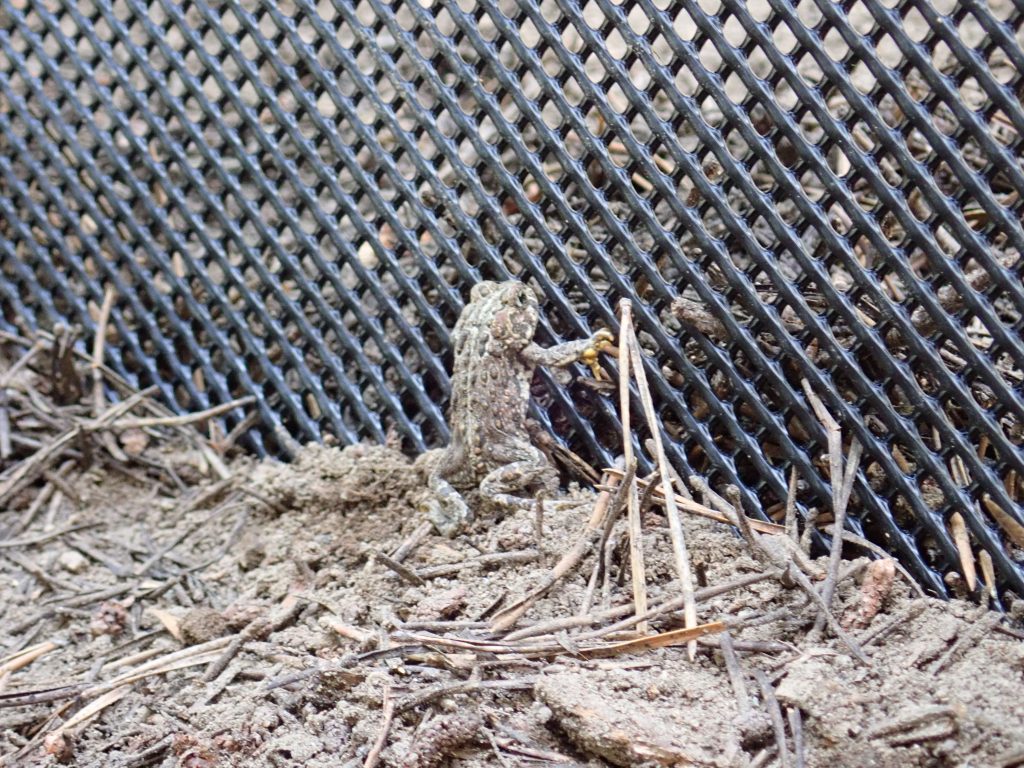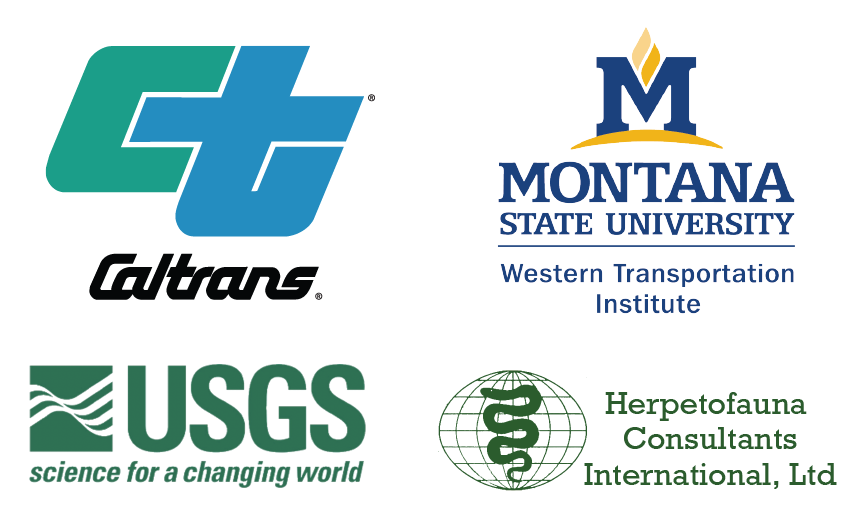
Companion video shows underground crossing structures in action
Roads can be dangerous for California’s reptiles and amphibians, but a five-year study and new video show that there are effective strategies to help these animals cross roads safely.
The California Department of Transportation (Caltrans) released the results of the study this week in a comprehensive, evidence-based best practices guide that explains approaches and techniques for minimizing the impact of roads on fragile and diminishing habitats and species, including frogs, toads, salamanders, turtles, lizards and snakes.
The best practices guide is the first of its kind for amphibian and reptile management and conservation near California roads.
“It is no longer a case of putting a few pipes and fences into the ground with a ‘fit and forget’ approach,” said Tom Langton of Herpetofauna Consultants International, Ltd., primary author on the guidance document. “This guide offers resource managers in California opportunities and a clear plan to improve existing crossings and build new ones to better standards where they are most needed. The guidance should be valued in other states with similar wildlife-road issues and at the international level, too.”
Many reptile and amphibian species must cross roads to reach essential breeding and foraging habitat, are slow moving or are too small for drivers to see and avoid. Snakes and lizards may also be attracted to paved roads that typically absorb and retain heat. All these behaviors put them at high risk of vehicle collisions.
“We have a responsibility to maintain the highway system in a way that doesn’t impede or disrupt wildlife, including the movement of California’s threatened and endangered reptile and amphibian species,” said Caltrans Director Toks Omishakin. “This study allows us to analyze feasible and effective ways Caltrans can use ecologically-minded design to minimize impacts on these wildlife populations.”
Traditionally, transportation agencies and wildlife managers have installed structures to help amphibians, reptiles and other small animals cross highways safely, such as tunnels under roads or barrier fencing.
“While agencies have made significant investments in these structures for many years, there has been little research into how effective they are,” said Dr. Robert Fisher, a U.S. Geological Survey (USGS) supervisory ecologist involved in the study. “Management guidance informed by science is needed to help ensure this critical infrastructure is safe for sensitive species.”
With these concerns in mind, the goals of the collaborative project were to address this information gap using a logical framework and to help transportation agencies like Caltrans plan barrier and crossing structures more effectively.
To help Caltrans determine which reptile and amphibian species to prioritize, USGS scientists created a ranking system for more than 160 species and sub-species, based on their vulnerability to road dangers. Turtles, tortoises and snakes dominated the highest risk category. USGS also developed a mapping system to allow Caltrans to easily find where the ranges of high-risk species overlap with California highways and statewide conservation efforts. Species ranked high and very-high risk of negative road-related impacts include desert tortoise, California red-legged frog, sierra newt and red diamond rattlesnake, among others.
Then, in a series of field experiments, the USGS scientists investigated how reptiles and amphibians interact with different types of fencing, how far high-risk migrating amphibians move along road barrier fencing before “giving up” or finding a passage, and the effectiveness of turnarounds at fence ends.
“We were happy to find that turnarounds at barrier fence ends were largely effective in changing the trajectory of many species to help lead them back toward a passage,” said Cheryl Brehme, the USGS project lead. A new video by USGS shows a California tiger salamander successfully make it to an underground crossing after being guided by one of these turnarounds.
USGS and partners also designed and tested of a new type of passage structure called an elevated road segment.
“The elevated road-segment is really exciting,” said Brehme, “because it can be made to any width and length enabling reptiles, amphibians and other small wildlife species to freely move back and forth across wide stretches of roadway.”
Caltrans used the results of these combined studies to produce the best management practices guide, which will inform the work of district biologists and engineers and will likely be useful to many other organizations involved in the planning and construction of transportation infrastructure. USGS has also released a comprehensive report of its studies in conjunction with the new guidance document.
The guide emphasizes that different landscapes – and different species – need a range of solutions, and the needs of different species and their numbers will influence positioning and sizes.
“Planning for smaller rare species calls for designs that take into account the sensitivities and needs of these understudied and often forgotten species” said Dr. Tony Clevenger of Western Transportation Institute, who led the development of the best management practices guide. The best practices guide was produced for Caltrans by the Western Transportation Institute of Montana State University with Herpetofauna Consultants International, Ltd and is based on existing knowledge and foundational studies by the U.S. Geological Survey Western Ecological Research Center.

CONTACTS
California Department of Transportation (Caltrans)
Amy Bailey, Supervising Environmental Planner
Luz Quinnell, Senior Environmental Planner
Luz.Quinnell@dot.ca.gov
Western Transportation Institute
Tony Clevenger, Senior Research Scientist
apclevenger@gmail.com
Herpetofauna Consultants International, Ltd
Tom Langton, Ecological Consultant
TL@Langtonuk.co.uk
USGS Western Ecological Research Center
Cheryl Brehme, Biologist
cbrehme@usgs.gov
Robert Fisher, Supervisory Research Biologist
rfisher@usgs.gov
FOR MORE INFORMATION: KEY DOCUMENTS
Langton, T.E.S. and A.P. Clevenger. 2021. Measures to Reduce Road Impacts on Amphibians and Reptiles in California. Best Management Practices and Technical Guidance. Prepared by Western Transportation Institute for California Department of Transportation, Division of Research, Innovation and System Information. https://westerntransportationinstitute.org/wp-content/uploads/2021/04/4W5589_BMP_Impact_Reduction_Amphibians-Reptiles_Ca-20210226-LR_rev.pdf
WTI Project Webpage: https://westerntransportationinstitute.org/research_projects/california-sensitive-reptile-and-amphibian-highway-crossings/
Brehme, C.S. and R.N. Fisher 2021. Research to Inform Caltrans Best Management Practices for Reptile and Amphibian Road Crossings. USGS Cooperator Report to California Department of Transportation, Division of Research, Innovation and System Information. 65A0553. https://dot.ca.gov/-/media/dot-media/programs/environmental-analysis/documents/final-caltrans-usgs-report-herproadresearch-rev.pdf
Langton, T.E.S., and Clevenger, A.P. 2017. Amphibian and Reptile Highway Crossings: State of the practice, gap analysis and decision support tool. Report prepared for the State of California, Department of Transportation, Division of Research and Innovation, Office of Materials and Infrastructure Research, June 2017.
https://westerntransportationinstitute.org/wp-content/uploads/2021/05/4W5589_Lit_Review_amphib-reptile-crossings_3July2017.pdf
Brehme, C.S., Hathaway, S.A. & Fisher, R.N. An objective road risk assessment method for multiple species: ranking 166 reptiles and amphibians in California. Landscape Ecol 33, 911–935 (2018). https://doi.org/10.1007/s10980-018-0640-1
U.S.G.S. Turnaround, Salamander! (outreach video) 2021. https://www.usgs.gov/media/videos/turn-around-salamander
